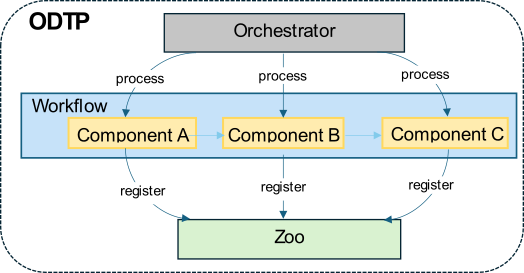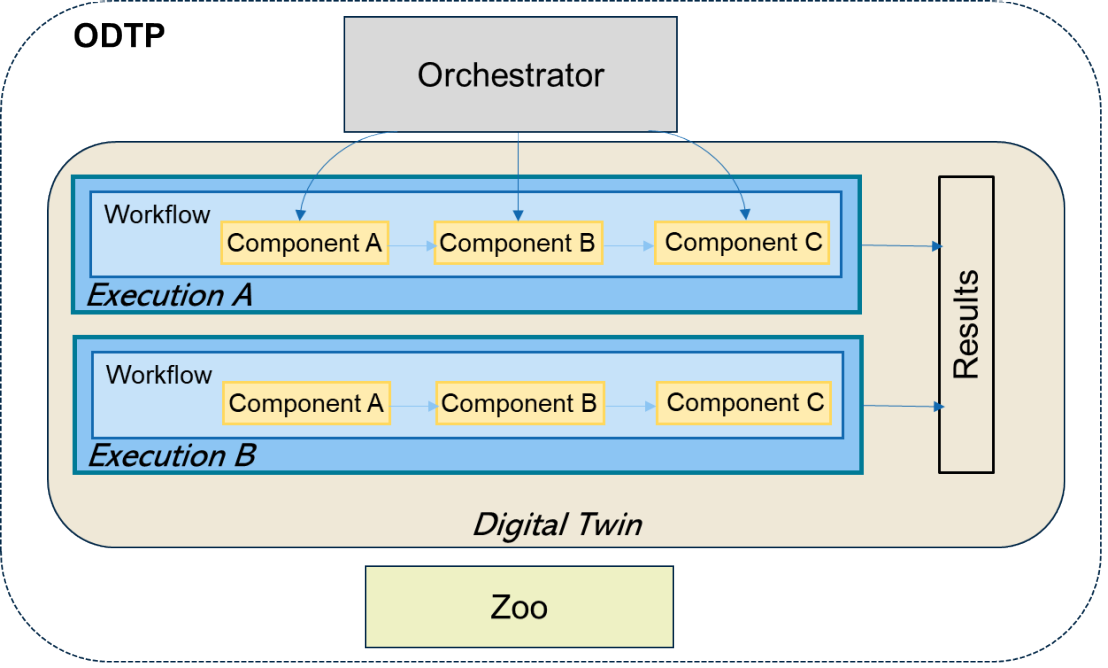Open Digital Twin Platform (ODTP)
The ODTP is a technology based on cutting-edge open-source software that has been developed in collaboration with the SDSC and financially supported by the SDSC/CSFM and swissuniversities ORD programme.
Main elements

In a nutshell, ODTP is a framework that combines independently developed tools into a sequence of steps without permanently linking them or integrating them into a monolithic application. It is composed of i) the Orchestrator which is the application behind ODTP, ii) Components which are the tools transformed to be compatible with ODTP, iii) Workflows which are the combination of components into sequences and iv) the Zoo which is a collection of components.
Workflows and components

Several workflows can be executed within ODTP which generate results that can be accessed, visualized and combined. This is the context of the ODTP and defines a digital twin (see fig.2).
ODTP not only facilitates the combination of tools, but it also provides important functionalities regarding reproducibility, traceability, and access control.
Anybody maintaining or developing tools for analyzing, simulating, accessing, and loading data, as well as visualizing research data, can create the corresponding new element (i.e., component in ODTP) by following certain rules and instructions.
Prototype
The current prototype implementation is based on the agent-based simulation tool MATSim and the related pipeline eqasim used for large-scale simulations. Examples of regions whose data can be accessed and simulated in the currently available tools within ODTP are Switzerland, Île-de-France and Corsica.
- Inputs: Household travel survey, population and business census, commuting matrices, OpenStreetMap, and HAFAS (GTFS).
- Output: Trips and activities for each individual on a single day, consolidated information for households.
If you are interested in trying the platform out check out the GitHub repository and do not hesitate to contact us.